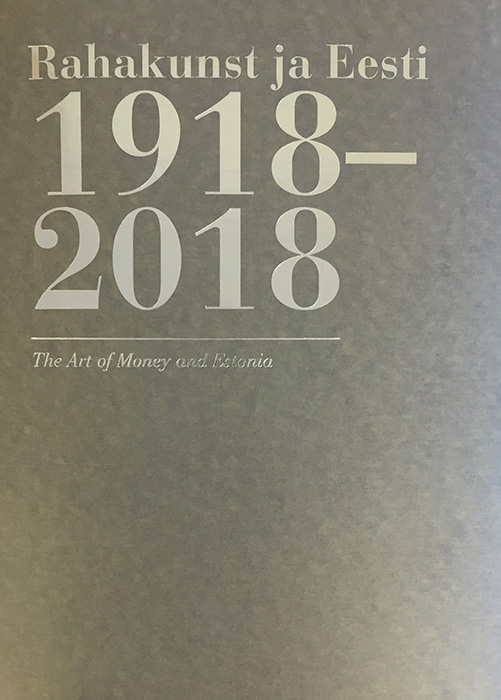The Art of Money and Estonia 1918–2018
20.00€
This book accompanies the exhibition The Art of Money (01.12.2018 – 10.03.2019, Mikkel Museum) and looks at the relationship between Estonian art and money design, as well as the history of Estonia and the creation and change in national identity in money design through the motifs and artworks depicted. Money is not just a means of payment, but also a symbol of a state’s sovereignty or the lack of it, its political and social circumstances, its leaders, people and national self-images.
During the one hundred years of Estonian statehood, the wallets and purses of Estonians have held more than a dozen different currencies. There have been just three that Estonians can call their own: the Estonian mark in 1919–1927 and the Estonian kroon in 1928–1940 and 1992–2010. Unlike the Reichsmarks and Soviet roubles, which were in circulation in occupation years, the euro was adopted voluntarily in 2011. The changeover from kroons to euros and the use of banknotes which share the same design across the euro area did not mean that currency design ceased in Estonia. It is still very much alive and the national sides of two euro commemorative and collector coins reflect and shape our identity in the same way as the old Estonian marks and kroons. During the past 100 years artists have repeatedly used the masterpieces of Estonian art as elements of currency design, especially during the nation-building periods, i.e.
while designing the first marks in the newly independent country and the Estonian kroons in the restored Republic of Estonia. Estonian banknotes feature such masterpieces as The Spinner by Johann Köler, Dawn and Dusk by August Weizenberg, Landscape of Viljandi by Eduard Wiiralt and Kalevipoeg at the Gate of Hell by Kristjan Raud. In addition to currency notes and coins in circulation in Estonia in 1918–2018 and their designs, the book includes a selection of paintings by Siim-Tanel Annus in his original technique, which have been inspired by the history of Estonian money and its design.
With this exhibition and the accompanying book The Art of Money, Eesti Pank and the Art Museum of Estonia celebrate their 100th anniversaries and pay homage to the Estonian art of money and the artists who have helped to build and maintain the trust of the Estonian people in their currencies and to interpret the Estonian heritage and identity.

